WastED London: A chat with the chefs whose delicious dishes challenged waste culture

After five weeks of eye-opening education and gastronomic delight, WastED London’s run has come to an end. Hosted on the rooftop of Selfridges, Dan Barber’s pop-up restaurant has been a runaway success, with many Londoners having taken this chance to learn about the vital issue of food waste in the most delicious way imaginable.
It wasn’t just Barber and his team that made WastED such a success though. Every night, some of the country’s best and brightest chefs stepped into the kitchen to bring their own dish inspired by the pop-up’s philosophy and ideas. As this incredible project draws to a close, we caught up with some of those talents, and the man behind it all, to learn their own WastED stories.
Alain Ducasse
How did you get involved with WastED?
I have known Dan Barber for years and got involved in the first edition of WastED in New York in 2015. The WastED movement is an inspirational way of repurposing ingredients which would otherwise be thrown away, using them to create interesting creations and shift the way of thinking about food. Sustainability has always been part of my cooking ethos and so getting involved with WastED was a natural fit for me and my team at Alain Ducasse at The Dorchester.
What was your experience today working with Dan and his team?
Dan and his team are fantastic to work with. The energy was amazing, so much positivity and great feedback from the guests. Dan ensures every guest learns about the components of their dish, so they really understand its origin and story behind it. I am very proud to be a part of the WastED movement along with my Executive Chef of Alain Ducasse at The Dorchester, Jean-Philippe Blondet, who is also passionate about sustainable cooking, wasting almost nothing.
Can you tell us more about your special?
The team, Jean-Philippe and I, decided to create a Beef tips consommé, beetroot and coffee. We chose ingredients such as dry-aged beef tips, chicken feet, vegetable trimmings and scraps, along with the tops and tails / trimmings of beetroot, used coffee grounds, corked wine to make vinegar, mushroom seconds, leek roots and olive brine. All these ingredients are usually discarded and thrown away. We started with creating a light jelly from the beef consommé made from the dry–aged beef tips, vegetable trimmings and gelatine derived from chicken feet. The beef and vegetable trimmings that were used in the consommé were then sautéed with mushroom seconds and chilled. The mixture was then wrapped in blanched beetroot leaves. The dish was garnished with dried leek roots, coffee grounds and beetroot trimmings crumbled over the top and finished with a sauce made from a combination of reduced beetroot juice, used coffee grounds, corked wine vinegar and olive brine.
Are you going to implement anything you’ve learned, or been inspired by, in your own restaurants?
The WastED movement is very much part of my cooking ethos. I have been an advocate for sustainable cooking since the very beginning of my career. Using the whole ingredient is something that is an integral part of French cuisine, making sure nothing goes to waste that can be utilised in a dish. We use only the freshest and most seasonal ingredients in my restaurants such as Alain Ducasse at The Dorchester. The ingredients are sourced for their provenance and quality and food waste is something the team and I are very conscious of reducing throughout all my restaurants.
Daniel Masters
Photos: Filippo L’Astorina
Jason Atherton
How did you get involved with WastED?
It was pretty simple, Dan reached out to me about eight months ago. I’ve never met him before but his reputation precedes him as he is a great chef, and it seemed like such a great idea, and also something of a challenge. So I said “yes sure, I’d love to do it”.
Are you going to implement any further the ideas of using waste produce in your restaurants?
What it does is, rather than going to use waste produce, because it’s very difficult, it enables us to think about sustainability in a different way. Not just thinking about not using plastic bottles, not doing this, not doing that. A lot of things like when a chef chips a plate he won’t use it again, you know? You wonder: does it really matter? But it matters to the guest. I think we have to question everything we are doing. See if we can start to compost our waste and send it up to the farmers who would grow vegetables with it, potatoes and so forth. Stuff like that, when we do events like this, helps us realise that chefs and restaurateurs do create a lot of waste, and what can we do with it? How do we make that better?
How was your experience working today with Dan’s team?
Great, really great. Dan is a great chef, to work alongside him it is a great honour.
And your special, the Forgotten Cornish Soup, can you tell us about it?
Yes sure, we take all the fish trim no one wants to use, when they’re filleting all the fish down at the fishing farms. We take it and poach it in olive oil. We use the potatoes – we have a farmer in Lincolnshire who grows all our potatoes – and when they get sent to us, we grade them, so the large ones we keep, we make the mash potatoes with them, so it’s really earthy. We use all the potato peelings, which normally we would throw away, we dehydrate them, fry them, chop them up and use them as a garnish on top. Then we add the fish soup made from the head, guts, the belly all that and we pour it over.
It tastes really good as well. You’ve just opened Hai Cenato, your latest restaurant, how is it going there?
Good. Hai Cenato is going really strong, people are loving our pizzas, pastas, the New York-inspired dishes there. We are always very grateful that London diners are good to us and they come back again and again. We’re having a lot of fun, I love it, it’s been a dream of mine to open that restaurant.
So you tried Japanese, Tapas, Italian…is there anything else coming next?
Filipino maybe!
Filippo L’Astorina, the Editor
Photos: Filippo L’Astorina
Gordon Ramsay
How did you get involved with WastED?
Dan Barber personally reached out several months ago when he decided to bring the pop-up to London and I thought it was a brilliant idea that showcased some amazing vision.
What was your experience working with Dan and his team?
The Blue Hill team was super supportive throughout the whole event. They’ve had the expertise thanks to the success of the event in NY, so it was great to share their insight on the event.
You reunited with Clare for that night, how did you work together on the special dish?
Clare has been working within the group in our fine dining properties here and in France and her expertise is phenomenal. Along with some of the team she visited the event before our night to see how Dan and the other guest chefs were using waste products, so we felt that we should shine a light on the dairy industry with our Keeping it Veal dish.
Can you tell us about the ingredients you chose and why?
Dairy is so important here in Britain and Clare and I thought we should do something familiar, but different to showcase how you utilise these products. The sauce made was from whey by-products as well as leftover wine and was based on an 18th-century recipe.
You have many restaurants in the world, especially in the UK and the US. Do the British have a different approach to waste than American restaurants?
I think the British approach expiry with more thoughtfulness than in the US and because of that the Americans generate more waste. With all that said, this event really highlighted how both countries can really do more to help stop waste.
Will you implement waste upcycling any further after this?
We always try to in the restaurants and there were some incredible dishes that Dan’s team put out that night that showcased how we could possibly do more.
Filippo L’Astorina, the Editor
Photos: Gareth Davies
Andreas Caminada
How did you get involved with WastED?
Dan Barber asked me if I wanted to join him for this project and for me the choice was clear because it was a great idea: I had heard about it in New York. It’s a thing that’s very important and necessary so I said yes, let’s go to London. I had met Dan two or three years ago when I had a pop-up restaurant over in New York.
What was your experience today working with Dan and his team?
It was great to work with him and his team. Very positive, very excited about the event and we could feel this, it was a great atmosphere. I came over with a team member of mine and it was great to give a part of us to this project. We are used to busy services but I have a huge amount of respect for them because they were doing lunch, they were doing dinner, they did a really really fantastic job because it’s tough to do that on a pop-up site in a setting where you don’t feel as at home as you would in a permanent restaurant. We had just one dish so it’s much easier for us but they really kept up the quality throughout the run though, it was great. It was nice to be part of it.
Can you tell us more about your special?
We did chicken winglettes [the lower side of the chicken wing] we deboned it, brined it, smoked it, then braised it in the oven and finished it in the pan, getting that skin incredibly crispy. It’s a very tasty, very strong flavour. We did a dip made from old bread and some spice, then we made a salad from pickled stem of broccoli. Normally you wouldn’t think about using that part of the meat for the guests.
We try and throw away nothing though, we will turn it into a meal for the staff. It’s very important for chefs to look at ingredients like that because it’s all about creativity, if you are not creative then yes, maybe you will look at it, see nothing and throw it away. You find a use for everything somewhere, even if its just to add a certain flavour to a stock or sauce.
That I think is a very important message to the young chefs, and for everyone really. It makes me sick how much food is really being wasted and I think Dan has done a great job of getting people thinking about this, in their homes as well as in the restaurant. It’s not finished yet, this idea, it’s just starting.
You hosted a chef too recently at your restaurant, Quique Dacosta, right?
It’s nice to host chefs sometimes, to do something a little different, for me, for the team: my regular customers loved it, to come and see another chef working here. Seeing how another chef works, how another team works, coming together for a one time event with both of us. They have a completely different way of working to us, it was so interesting to see two kitchens working on one menu, a lot of fun
Are you hoping to make it more of a regular thing?
Yes. This was part of his European tour, but we’re thinking of doing it once or twice a year, make it a great charity evening for the foundation [Fundaziun Uccelin] I founded a few years ago. It’s a foundation that supports young servers and kitchen talents, helps them go and experience something different, helps them with all the travelling costs and everything like that.
Daniel Masters
Photos: Richard Boll
Lee Tiernan
How and why did you get involved with WastED?
Dan just emailed me and that was that. It just made sense for me to be involved and Dan is someone I’ve admired for some time now so I jumped at the chance to work alongside him.
What was your experience today working with Dan and his team?
Great. Dan and all the bar staff, the cooks, the wait staff, everyone was passionate and totally up for it. I put most of the hard work into my dish before I got there to inconvenience the team as little as possible. Service was intense, the whole WastEd team worked hard and cares so much.
Can you tell us more about your special?
I did a dish of kid faggots, topped with onions and chili flakes. Natoora sent me loads of onions, ones they couldn’t sell normally. They were a bit discoloured and maybe not what you expect to see when you look at a Tropea onion, you expect these big bulbous red-skinned things whereas with these we needed to strip the first couple of outer layers where they had been wet or discoloured. Not too much work at all and then they were totally delicious.
Are you going to put it on the menu at BAM?
I could definitely see it coming on the menu at some point, I’d like to play around with it a little. We have a Lamb Offal Flatbread on the menu. Maybe if we took that off I would put it on.
Do you feel like this is an issue more chefs and people are going to become aware of?
Definitely. We try and have as little waste as we can at BAM, we barely ever throw away food. Even when it’s tough outer leaves on a cabbage or something, we’ll incorporate them into staff food. The cool thing about WastED was it got everyone talking and I think that’s going to be the key. If you can make it interesting and popular somehow, like Dan’s done, people are going to want to get involved. That’s the way forward, keeping this conversation that everyone’s having going, keeping people interested.
Daniel Masters
Photo: Instagram @chefdanbarber
Alex Hely-Hutchinson
How did you get involved with WastED?
I got involved with WastED because I opened my shop in Neal Yard’s and Dan Barber was over in London. I recognised him and had read some of his books, and I rushed out and asked him “are you Dan Barber?” So I went and said hello and we got chatting, then kept in touch. He is amazing at getting people involved and he asked me to participate.
Can you tell us what it was like to work with Dan Barber and the team?
He’s quite a remarkable person to work with, because by this point they’d already spent 18 months understanding how we eat in the UK, and understanding where our waste is going. Suddenly walking into that and understanding how long that’s taken, the incredible amount of detail that’s gone into that was phenomenal. His team are incredible too: I introduced our dish at the start of the night and they all wanted to know more, they were hungry for information. I really enjoyed it!
Tell us about your special
My special tried to highlight a slightly different way of looking at grains as a waste product. We use a lot of wheat and barley through mass production, however, these grains are quite susceptible to diseases, they need a lot of pesticides and quite a lot gets discarded. Whereas with other grains like oats, rye, spelt, they grow naturally and wild, these grains aren’t being used efficiently. Quite often we send them off to be used as animal feed, but they’re absolutely delicious.
So we created a minor grain porridge, Oat Porridge with Rye Milk: something delicious that people would think: I want more rye, I want more oats. We found a lot of what got wasted with ourselves and our neighbours in Neal’s Yard was herb stems, so we turned them into a dill preserve. The other side is looking what we wasted as a cafe, and that’s milk and anything that ends up getting overcooked slightly, so what we did was a Steamed Barista Milk Sorbet with an Overcooked Barley Ice Cream Sandwich and Cardamon Pod and Coffee Grind Earth.
You were the only female chef who did a solo run at WastED, do you think that says a lot about the barriers and under-representation women face in the industry?
From people like Dan, no. There were some really young, unbelievably talented girls working there. In general, it’s a long hard slog. Getting a work-life balance is hard, I’ve chosen to go into the line of work that I have and we finish at ten and we have to be there, people depend on us; it’s difficult. It takes a long time to be amazing at anything and there are things in your personal life that come in between that.
Daniel Masters
Photo: Instagram @26grains
Brett Graham
Tell us about your special
It’s called Hake Head Saved from the Crab Trap and the idea is that there’s so much waste in the fishing industry, it’s ridiculous. Bycatch, where you see incredible fish just thrown away, or like in this case, great hake heads just used as bait for crab bait. There’s so much flavour and potential in those cheeks, I’ve used them here with a brewer’s grain crisp and some nice cabbage cores.
Anything you like here that’s especially unusual?
My playlist! It’s really cool to have something different on the radio and be able to keep things pretty casual: I’ve gone for a lot of Silverchair, who were an Aussie band you might not have heard of but they’ve got some great music, perfect for a place like this with all this energy.
Daniel Masters
Photos: The Ledbury (left), Daniel Masters (right)
James Lowe
You did two dishes for WastED, a main and a dessert. Can you start by telling us about the main dish?
We did a dish called Monkfish Liver, Preserved Lemon Vinegar and Citrus Skin Purée. Monkfish liver is discarded by fishermen at sea as it has little or no commercial value in the liver, but we pay fair price for the ingredient as I think it’s brilliant. In Japan it’s hard to get people to eat offal, let alone fish offal! We work with boats that do keep the liver as it’s considered a delicacy and market price of monkfish will actually be affected by the quality of its liver.
We salt lemon skins left from juicing for two months and then rinse them and add to homemade white wine vinegar from wine that would be discarded because of oxidation or from wine tastings. We took skins from a variety of citrus fruits discarded by the bar at Selfridges. We dehydrated and blitzed some to form a powder along with dried wild fennel pollen from last summer. We also boiled some of the skins and made a puree to serve alongside the liver. Finally, we cooked the liver in discarded butter from service that we boil and make brown butter from.
Sounds delicious! How about the dessert?
It was Innes Ice Cream, Goat’s Whey Caramel and Burnt Apple and Pear Purée. Goat’s whey is a previously discarded product but is becoming very popular due to it’s versatility. We reduce 15L down to 500ml. This forces the natural sugars to caramelise giving you a very complex flavour: sour, cheesy, punchy. We then made a puree from “overripe” and damaged apples and pears that we burnt on the grill and juiced all the apple peel from the bar and reduced this to acidulate the dish. The ice cream is made from a batch of Innes Log that split and broke apart in the maturation period.
I think this is an important dish because it supports the British dairy and cheese industry, if we can help fund them in their experimentation and growth more farmers and people will see it as a viable choice and the quality and types of cheese produced will improve
Daniel Masters
Photos: Per-Anders Jorgensen (portrait), Anton Rodriguez (ice cream), Lyle’s (monkfish)
Tom Kerridge
How did you get involved with Wasted?
Ian Scaramuzza, who has been helping Dan Barber run the WastED event, got hold of me. I have known Ian for a long time and he is a well-respected chef in the industry.
What was your experience today working with Dan and his team?
Inspiring, eye-opening and full of creativity. It was so interesting to see the complete use of products and produce and Dan’s enthusiasm for it all is infectious.
Can you tell us more about your special?
Our dish was basically a play on the full English breakfast. We used black pudding, using up pig’s blood, rims from a bacon factory that we created pork crackers with, a cheese crust from cheese that was deemed as non-usable as it had oxidised. A dressing made with cucumber seeds, and then tomato ketchup using seconds tomatoes.
Are you going to implement anything you’ve learned, or been inspired by, in your own restaurants?
Yes, the view on waste is something that we have always been looking into at The Hand and Flowers. Firstly for environmental reasons and secondly, as a business, it doesn’t make sense to throw things away, so being involved in this event just reiterates everything that we know and helps to push it forward to the staff.
Daniel Masters
Photos: Instagram @cheftomkerridge
Yotam Ottolenghi
What was your experience with the WastED London project?
The truism that “one man’s rubbish is another man’s treasure” has never seemed more real to me. We did a full afternoon tea at the event, and I’ve been so inspired by what our chefs have created out of the things we are all so used to throwing away. A number of these WastED dishes are so impressive that they’re going to make it onto our actual menus. I’m used to championing vegetables which have, for too long, been relegated to the side of a dish. I can’t wait to keep championing the food which, for too long, has been pushed off the dish entirely.
Daniel Masters
Photos: Instagram @ottolenghi
Douglas McMaster
You cooked a dish of Carrots cooked in intercepted lemon peel compost, could you tell us more?
The dish is just what it sounds like: carrots are baked in a compost, which in turns imparts part of its flavour into the veg. I was inspired when I was out in Copenhagen. I baked with some compost but there was this most incredible lemony taste and I asked them if they had put the fruit in their compost because you could really tell. They told me that they had and I knew that I had to recreate it. It’s just a wonderful dish I think, sometimes you just get a dish that works. It’s so sweet, you could almost consider it a dessert but not there’s not a scrap of added sugar or sweeteners.
How was your experience working with Dan and the team?
Incredible. We had corresponded beforehand for quite a long time. We’d be talking about ideas, trends, just generally sharing things we found interesting. I had watched his TED talk on Foie Gras, you might have seen it, I think a lot of people have now, it’s pretty iconic; I was completely inspired by it and by his passion for what he was doing at Blue Hill. Then finally we met and it was so good to talk to each other in person, to feel that energy that he and his team had. Everyone was just completely on point the entire evening.
Did cooking there inspire any new ideas for you, or open your eyes to anything?
Lots of little things really, like the Kale trees. Seeing what are regarded as done for Kale plants, when they still have so much value and so much food left to give. It’s all a matter of perspective really and we just look at things with such narrow, wasteful eyes that we don’t see what’s actually there. There was a lot of things like that.
Daniel Masters
Photos: Facebook Silo Brighton (left), Daniel Masters (right)
Chantelle Nicholson
How did you get involved with WastED?
I received an email from Dan Barber at the end of January, asking if Marcus and I would like to be involved. I jumped at the opportunity having been a follower of Blue Hill at Stone Barns for a number of years.
What was your experience today working with Dan and his team?
As “guest chefs” we were given a larder list of “waste” food but were encouraged to utilise things from our own kitchens. I came up with the dish then arrived in the kitchen at 11am on the day. It is quite a tight space so all the team were already hard at work setting up for service. I was introduced to the team, who were all wonderfully passionate and interested in what my dish was. Service began and it didn’t stop! I saw most of the WastED menu and got to try a lot of the dishes at the end. It was super inspiring and thought-provoking.
Can you tell us more about your special?
I analysed what we used to throw out on a weekly basis at Tredwells. Most of our trim from produce we use for staff food, such as baked potato skins, vegetable and meat trim. Growing up in New Zealand when we ate scallops (my dad used to dive so we would have them on summer holidays) we ate everything, the coral and all, so throwing away the coral was a little foreign to me when I first arrived in London. I thought about the make up of coral, which we do throw away, and wondered if I could use it like cod’s roe, and thus make taramasalata. I smoked some of the corals we had, then whisked them with lemon juice, olive oil and garlic and it came out really well, that therefore became the base of my dish. I thought of creating a dish with the elements of fish pie so I added to the plate pickled bream tail ends, charred salmon belly and a baked potato skin mousse on the side. To add texture I toasted brioche crust trim and added fennel trim and a lemon zest jam to give it a little kick.
Are you going to implement anything you’ve learned, or been inspired by, in your own restaurants?
Absolutely, it was an eye-opening and inspiring experience and if we can get more people behind it then it will have a huge amount of traction. Hopefully we can combat as much food waste as possible moving forward. I have now put the scallopalata (the name I gave to the scallop coral emulsion!) on the menu here at Tredwells and am now also speaking to all of our suppliers to see if we can work together to use up any potential waste products they may produce.
Daniel Masters
Photos: Instagram @ladytredwell
Andrew Wong
How did you get involved with wastED?
They came for dinner!
How did you find it, working with Dan and the team?
The teams really good, every restaurant in the world would like to have that team, it’s like one of those fantasy football leagues, so many incredible chefs in one place. Lots of them are head chefs that move onto top things, they’re incredibly passionate chefs. Everyone buys into it, as cynical as that sounds, they really understand the concept behind it and really behind it.
Can you tell us more about your dish?
So we did a pig’s blood dish. Actually, in hindsight, I think we pushed it a little too far. It was literally poached blood. Lots of the things that Dan talks about, we already take into consideration for everyday cooking anyway: cooking blood, chicken feet and heads. That’s already what a chinese restaurant does, without an agenda, it’s just what it is. That’s where I think we pushed it too far, there was no sugar coating, no dressing it up. We basically did a tofu dish, but replaced the tofu with blood, but I think actually it was a little too garish for people.
Daniel Masters
Photos: Instragram @lotusland_ldn (left) @chef_rasmike92 (right)
Björn Frantzén
How did you get involved with WastED?
Very simple: Dan Barber phoned me and asked! We met a couple of times doing 50 Best, although you don’t have much time to talk, you see what everyone’s up to on Instagram and things like that. I think it’s a very important message that he wants to put forward.
What was your experience today working with Dan and his team?
It’s amazing, it’s a pop-up yet it’s super super busy. It’s fun, they’ve been doing it for four weeks but it’s still a great experience, there’s a lot of great experience in the dining room. You can see these sorts of things can only be done in certain cities, big metropoles like London, New York, Paris maybe.
Can you tell us more about your special?
It’s a take on a signature dish from restaurant Franzen, that dish is one of the ones that has been with us for the longest because we have two gardens that provide us with all of our vegetables in the restaurant and during some parts of the harvest season we just get too much, so we need to create a dish to use them. That’s one of the things about doing it here: it’s nice and easy to do it with ingredients that are organic or biodynamic but to do it with things that you’d normally throw away, like the fish scales the dish is topped with, that’s the main thing. It’s got a Latin name: it’s called Satio Tempestas.
You’re about reopen your main restaurant, what can you tell us about it?
We’re reopening in August and so many things are different. We’re going from 90 square meters to 515, but still 22 seats. It’s an old building, from 1895, over three floors so it’s a very unique project to be doing a restaurant there. We’ll have a roof terrace, open fire, an open kitchen, urban garden on the roof, big lounge on the penthouse.
Are you going to implement anything you’ve learned, or been inspired by, in your own restaurants?
In the Nordic region, we have to use a lot of techniques Dan Barber is using here. Fermenting and pickling, I think we do a lot of that in Nordic cuisine already and we’re going to keep on with it.
Rasha Barazi
Photos: Instagram @bluehillfarm (left) @chefdanbarber (right)
Daniel Berlin
How did you get involved with WastED?
Dan contacted me. I had talked to him about our parsnip signature dish that we were making in Sweden, and we kept in touch, then he asked me to come here. This project is a real eye opener, you know about the rest when you work in a restaurant of course but this really shows what you can make of it. We think in restaurants that if something, the meat, the fish, doesn’t look perfect that it’s going to taste bad. You know of course, about the caviar, I couldn’t believe it, you think of it as something very luxurious but there is so much waste.
These are not small things, these are very important things. I think if someone has to start caring, to start doing things with produce we feel are wasted. They have the knowledge and the history behind them, so it’s so easy to learn and to understand. I am so happy I came.
What was your experience today working with Dan and his team?
Very nice! Dan has so much energy, you can really see he’s passionate about cooking food, even though it’s the last day: it’s very emotional here! It’s beautiful.
Can you tell us more about your special?
My dish was something that I came up with by looking at my own restaurant and seeing that, actually, we do quite a lot with waste. It’s winter still in Sweden, so we cook from things like celeriac roots.
You just won a prize for a dish in Sweden, can you tell us more about it.
That’s also a very simple dish because we use the whole bird. We use the duck’s tongue, we fry them for a crispy skin, the taste that everyone loves. We use the heart, the legs, the breasts, serve them all quite plain with a fat emulsion, which I used on my dish today. It’s a plain dish but also interesting, very clean, I think people like it so much because it’s so straight up and honest, it says: this is a bird.
Filippo L’Astorina, the Editor
Photos: Instagram @danielberlinkrogiskanetra
Dan Barber
Hi Dan, I can’t believe it’s the final night, how do you feel?
Sad but happy too, it’s been five incredible weeks.
When we talked five weeks ago I asked you what was your favourite restaurant in London, do you have one now?
You know what, I went out only once, last night, at the Dairy, and I loved it. I really loved it.
How was working with all the great chefs who came here every day?
I couldn’t be happier, they were all amazing, and I’m not just saying it. They really embraced WastED. They worked hard with our team and came up some fantastic dishes.
London embraced it too, did you imagine this kind of response?
Yes it did, beyond any expectations, I’m very grateful for that.
Filippo L’Astorina, the Editor
Photos: Richard Boll
WastED London was at Selfridges, 400 Oxford Street London W1A 1AB, from 24th February until 2nd April 2017, for further information visit here.
Watch our interview with Dan Barber on WastED London here:


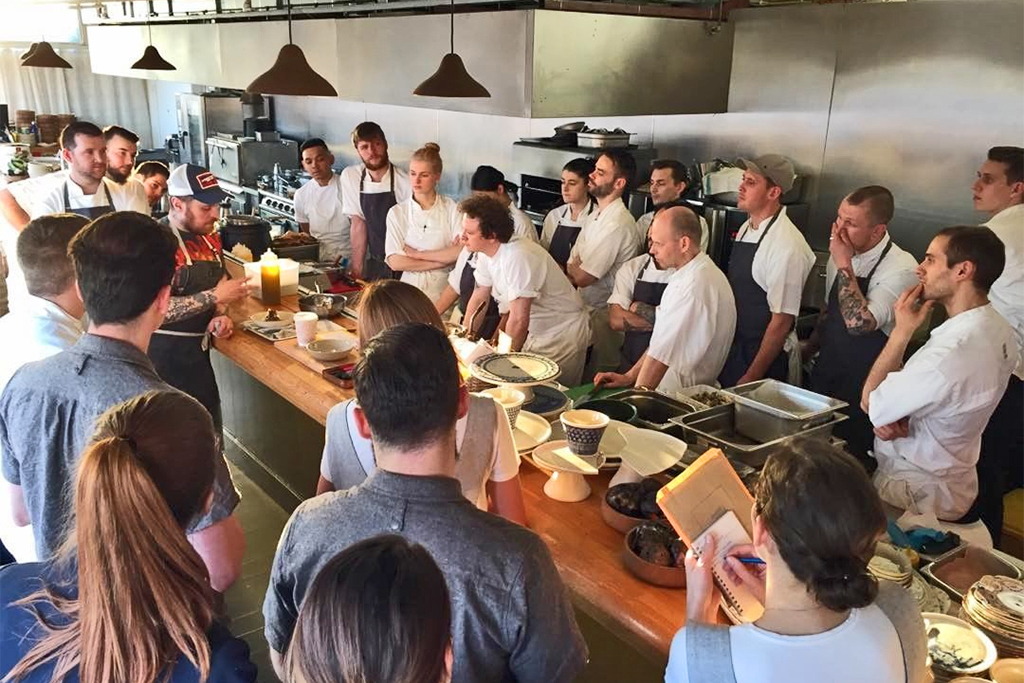
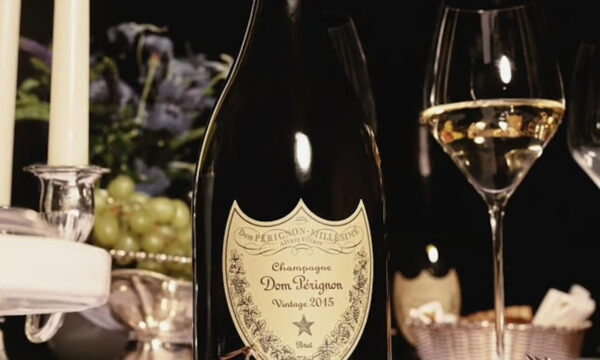
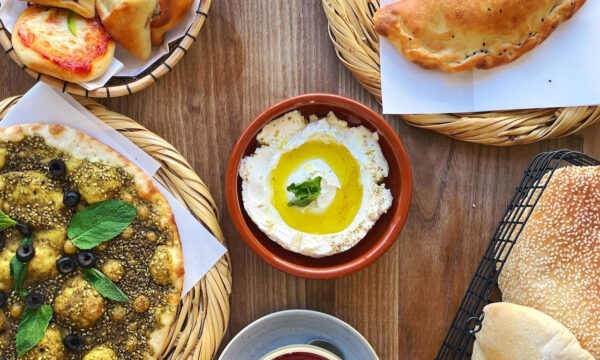


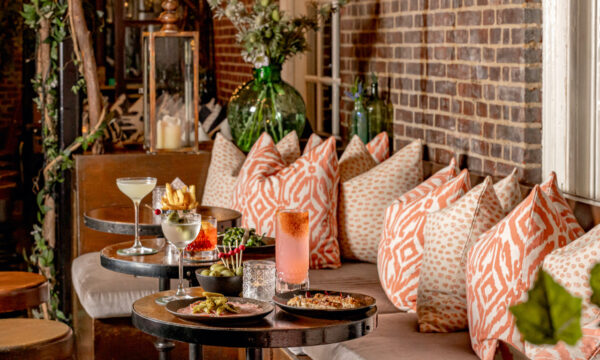

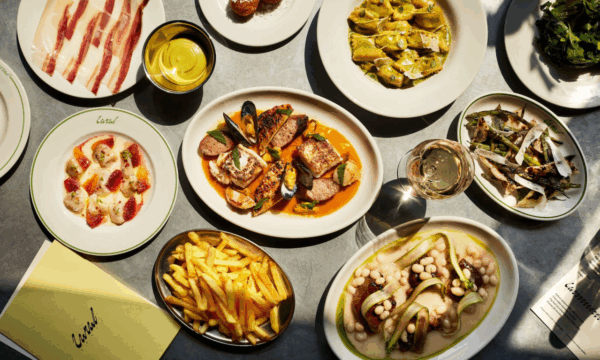
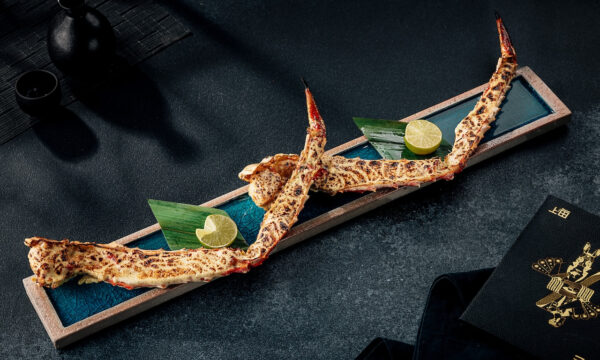
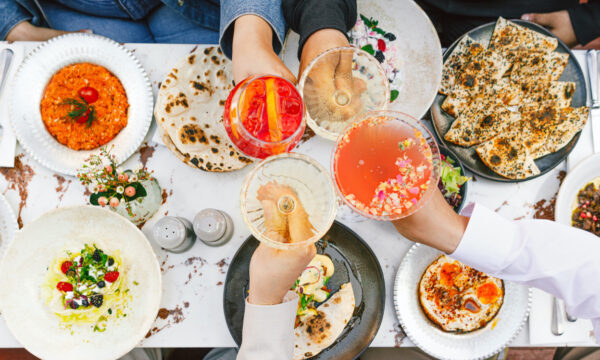
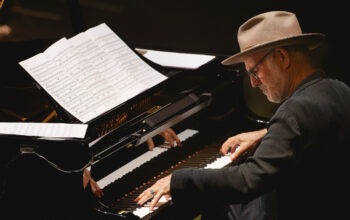


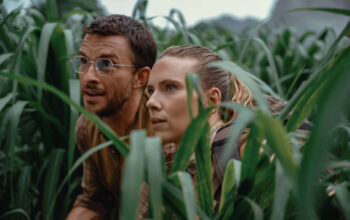
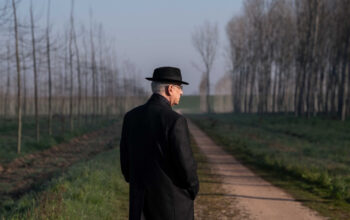

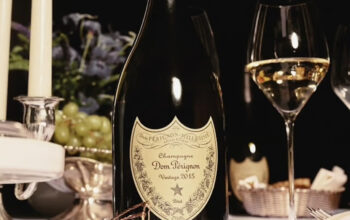
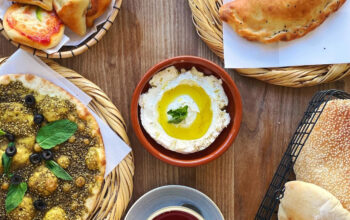





Facebook
Twitter
Instagram
YouTube
RSS